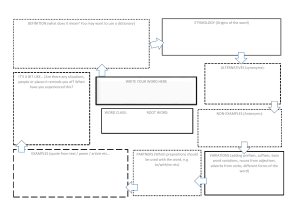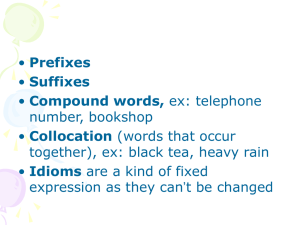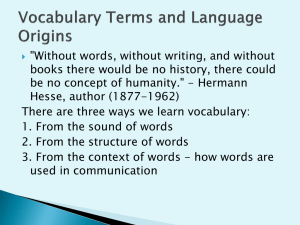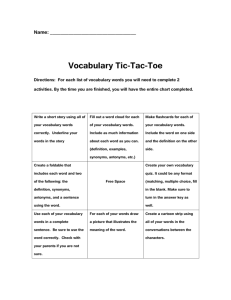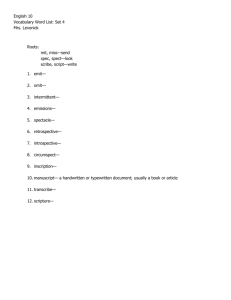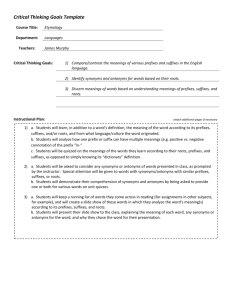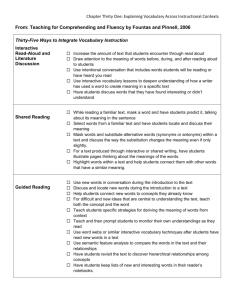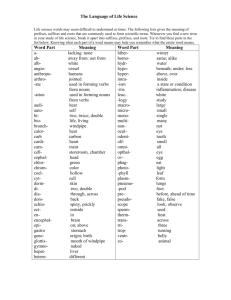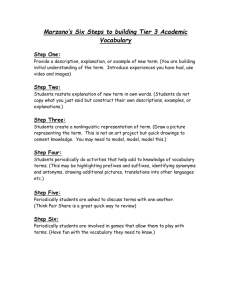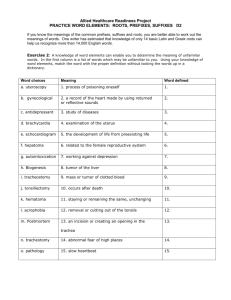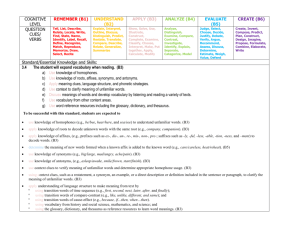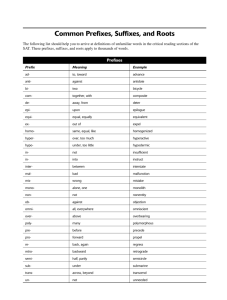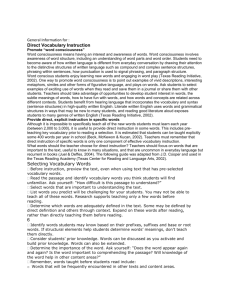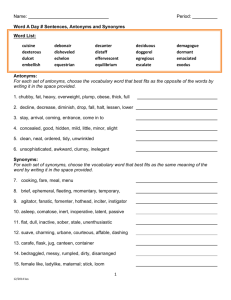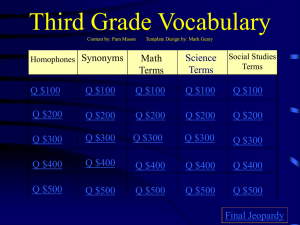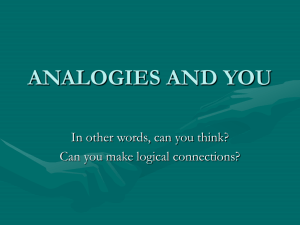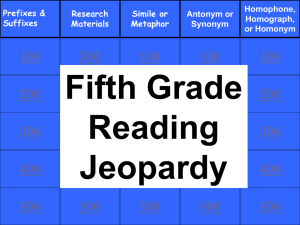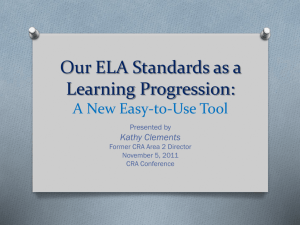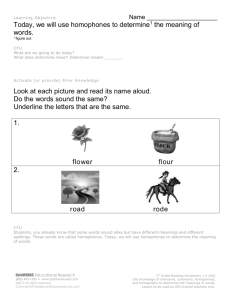2.7
advertisement
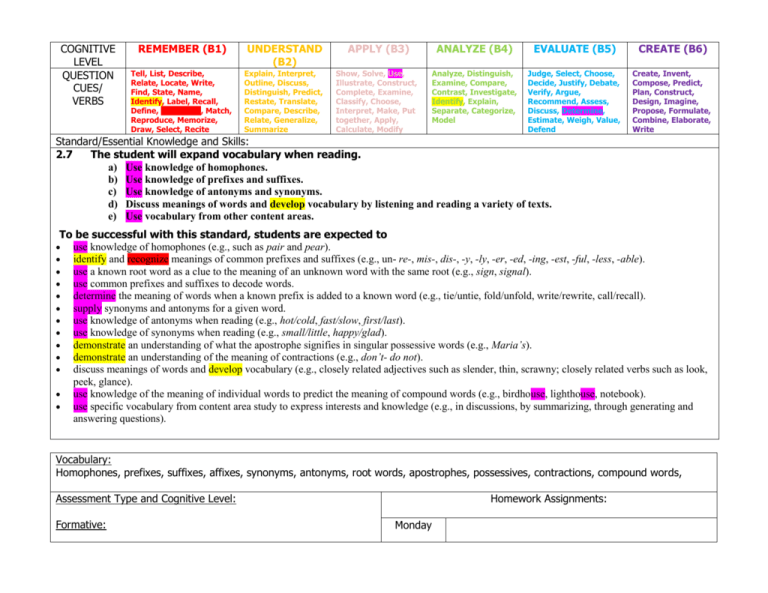
COGNITIVE LEVEL QUESTION CUES/ VERBS REMEMBER (B1) UNDERSTAND (B2) APPLY (B3) ANALYZE (B4) EVALUATE (B5) CREATE (B6) Tell, List, Describe, Relate, Locate, Write, Find, State, Name, Identify, Label, Recall, Define, Recognize, Match, Reproduce, Memorize, Draw, Select, Recite Explain, Interpret, Outline, Discuss, Distinguish, Predict, Restate, Translate, Compare, Describe, Relate, Generalize, Summarize Show, Solve, Use, Illustrate, Construct, Complete, Examine, Classify, Choose, Interpret, Make, Put together, Apply, Calculate, Modify Analyze, Distinguish, Examine, Compare, Contrast, Investigate, Identify, Explain, Separate, Categorize, Model Judge, Select, Choose, Decide, Justify, Debate, Verify, Argue, Recommend, Assess, Discuss, Determine, Estimate, Weigh, Value, Defend Create, Invent, Compose, Predict, Plan, Construct, Design, Imagine, Propose, Formulate, Combine, Elaborate, Write Standard/Essential Knowledge and Skills: 2.7 The student will expand vocabulary when reading. a) Use knowledge of homophones. b) Use knowledge of prefixes and suffixes. c) Use knowledge of antonyms and synonyms. d) Discuss meanings of words and develop vocabulary by listening and reading a variety of texts. e) Use vocabulary from other content areas. To be successful with this standard, students are expected to use knowledge of homophones (e.g., such as pair and pear). identify and recognize meanings of common prefixes and suffixes (e.g., un- re-, mis-, dis-, -y, -ly, -er, -ed, -ing, -est, -ful, -less, -able). use a known root word as a clue to the meaning of an unknown word with the same root (e.g., sign, signal). use common prefixes and suffixes to decode words. determine the meaning of words when a known prefix is added to a known word (e.g., tie/untie, fold/unfold, write/rewrite, call/recall). supply synonyms and antonyms for a given word. use knowledge of antonyms when reading (e.g., hot/cold, fast/slow, first/last). use knowledge of synonyms when reading (e.g., small/little, happy/glad). demonstrate an understanding of what the apostrophe signifies in singular possessive words (e.g., Maria’s). demonstrate an understanding of the meaning of contractions (e.g., don’t- do not). discuss meanings of words and develop vocabulary (e.g., closely related adjectives such as slender, thin, scrawny; closely related verbs such as look, peek, glance). use knowledge of the meaning of individual words to predict the meaning of compound words (e.g., birdhouse, lighthouse, notebook). use specific vocabulary from content area study to express interests and knowledge (e.g., in discussions, by summarizing, through generating and answering questions). Vocabulary: Homophones, prefixes, suffixes, affixes, synonyms, antonyms, root words, apostrophes, possessives, contractions, compound words, Assessment Type and Cognitive Level: Formative: Homework Assignments: Monday Tuesday Wednesday Summative: Thursday Friday MONDAY TUESDAY WEDNESDAY THURSDAY FRIDAY ------------------------- ------------------------ ----------------------- --------------------- ----------------------- ------------------------- ------------------------ ----------------------- --------------------- ----------------------- ------------------------- ------------------------ ----------------------- --------------------- ----------------------- Differentiation (Above, On, and/or Below Grade Level) Learning Plan, Activities, Planned Questions (Include time allotted to specific activities) Hook/ Essential Question DATE A O B eflection Closure
